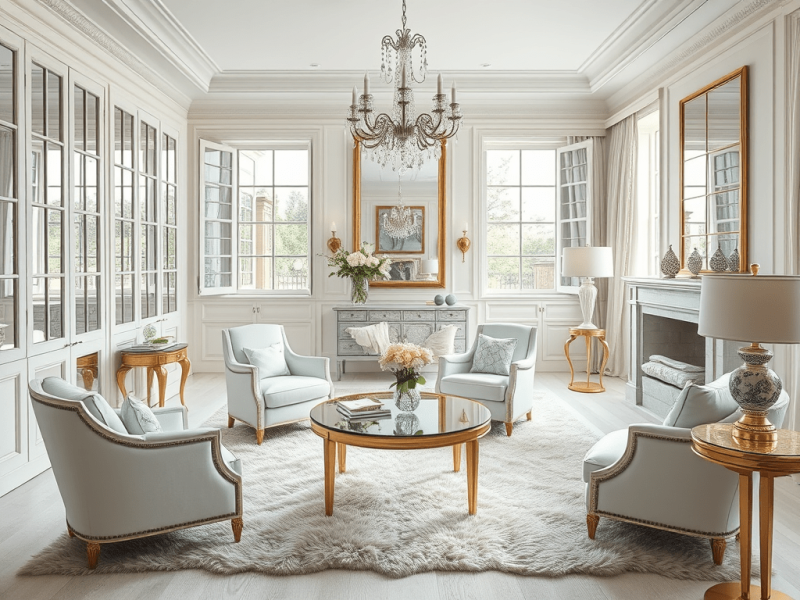
Edward William Godwin (1833 – 1886) was a British architect and designer. He was born in the city of Bristol. He began his career designing in mid-Victorian Britain’s strongly polychromatic “Ruskinian Gothic” style, inspired by The Stones of Venice, and then transitioned to the “Anglo-Japanese taste” of the Aesthetic Movement and Whistler’s circle in the 1870s. The Arts and Crafts Movement bears Godwin’s imprint.

Early training
He received his training in Bristol under the tutelage of William Armstrong.
Biography
He was a city surveyor, architect, and civil engineer who worked for William Armstrong. In 1854 in Bristol, he established his practice with no notable commissions. Consequently, between 1857 and 1859, he lived in Ireland and worked with his engineer brother.
One of the most artistic spirits of this century.
Oscar Wilde
His first significant commission was the 1857 church in Saint Johnston, County Donegal (Ireland). In 1861, he designed the town halls of Northampton and Congleton, both inspired by Ruskin’s Gothic interpretation.
His work was influenced significantly by the 1862 London ‘International Exhibition on Industry and Art .’ He experimented with interior design in his Bristol home, arranging Japanese prints on plain-coloured walls, Persian rugs on bare floors, and 18th-century furniture.



Japanese influence
In 1862, when few others were interested, he began collecting Japanese artefacts. In 1866, he collaborated with William Burges, a fellow admirer of Gothic and Japanese design who had relocated to London in 1865.
His association with Henry Crisp lasted from 1864 to 1871. Godwin established his own office in London in 1865. He began designing wallpaper for Jeffrey and Co. in 1866 and furniture in various styles in 1867 when he completed his work on Dromore Castle in Ireland.

His best-known works include William Wall’s stark Anglo-Japanese ‘Art Furniture.’ The Art Furniture Company manufactured his designs for a brief period, and subsequent production was by Gillow, Green and King, Collingson and Lock, and W.A. Smee.

The term ‘Anglo-Japanese’ was coined to describe the slender lines and geometric shapes of Godwin’s art furniture, which were frequently produced in ebonized wood without mouldings, carving, or ornamentation.
Collaboration with Whistler
He collaborated with friend and painter James Whistler from 1874 to 1878.
In 1876, he designed vernacular-style houses for the Bedford Park Estate in Chiswick (Britain’s first garden suburb) but was later replaced on the project by Richard Norman Shaw.
Oscar Wilde described him as ‘one of the most artistic spirits in England’ when he decorated Wilde’s house on Tite Street in London in 1884. He was an accomplished writer who developed an interest in costume and set design towards the end of his life. His 1870s designs influenced subsequent industrial and interior design and anticipated Modernism in Germany and France at the turn of the century.
Recognition
His first winning competition entry was the Italian Gothic design for Northampton town hall. He collaborated with James Whistler (with Whistler’s painted panels); they were produced by William Wall and shown at the 1878 Paris Exposition Universelle.
Sources
Byars, M., & Riley, T. (2004). The design encyclopedia. Laurence King Publishing.
Wikipedia contributors. (2021, February 28). Edward William Godwin. In Wikipedia, The Free Encyclopedia. Retrieved 04:41, April 27, 2021, from https://en.wikipedia.org/w/index.php?title=Edward_William_Godwin&oldid=1009362061
Additional Reading
Arbuthnott, C., Soros, S. W., & Godwin, E. W. (1999). E.W. Godwin: Aesthetic movement architect and designer. Yale University Press.
Weber, S., & Godwin, E. W. (1999). The Secular Furniture of E.W. Godwin: With catalogue raisonné. Published for the Bard Graduate Center by Yale University Press.
More on British Furniture Design
Syrie Maugham: Innovator of Vogue Regency Design
Syrie Maugham, a British interior designer, pioneered the “Vogue Regency” style, blending Regency elegance with modern elements, influencing interior…
Keep readingThe Influence of Colonial Expeditions and Outdoor Lifestyles on Safari Chair Design
Safari Chairs, originating from colonial needs, blend portability and comfort, showcasing a design evolution that balances historical significance and…
Keep readingBetty Joel: A Pioneer of British Furniture and Interior Design
Betty Joel, a British designer born in Hong Kong, crafted elegant furniture during the interwar period, blending simplicity with…
Keep readingCox & Co: Pioneering Tubular Steel Furniture in Britain
Cox & Co. shifted from automotive to tubular steel furniture, collaborating with designers and securing prestigious contracts, leaving a…
Keep readingGillows of Lancaster and London: A Testament to English Furniture Craftsmanship
Gillows of Lancaster and London, a renowned English furniture maker, evolved over two centuries, crafting elegant, enduring pieces for…
Keep readingGeoffrey Harcourt (b.1935) British Furniture Designer
Geoffrey Harcourt, born in 1935 in London, is a renowned British furniture designer known for his iconic seating designs,…
Keep readingRelated Articles
Discover more from Encyclopedia of Design
Subscribe to get the latest posts sent to your email.





